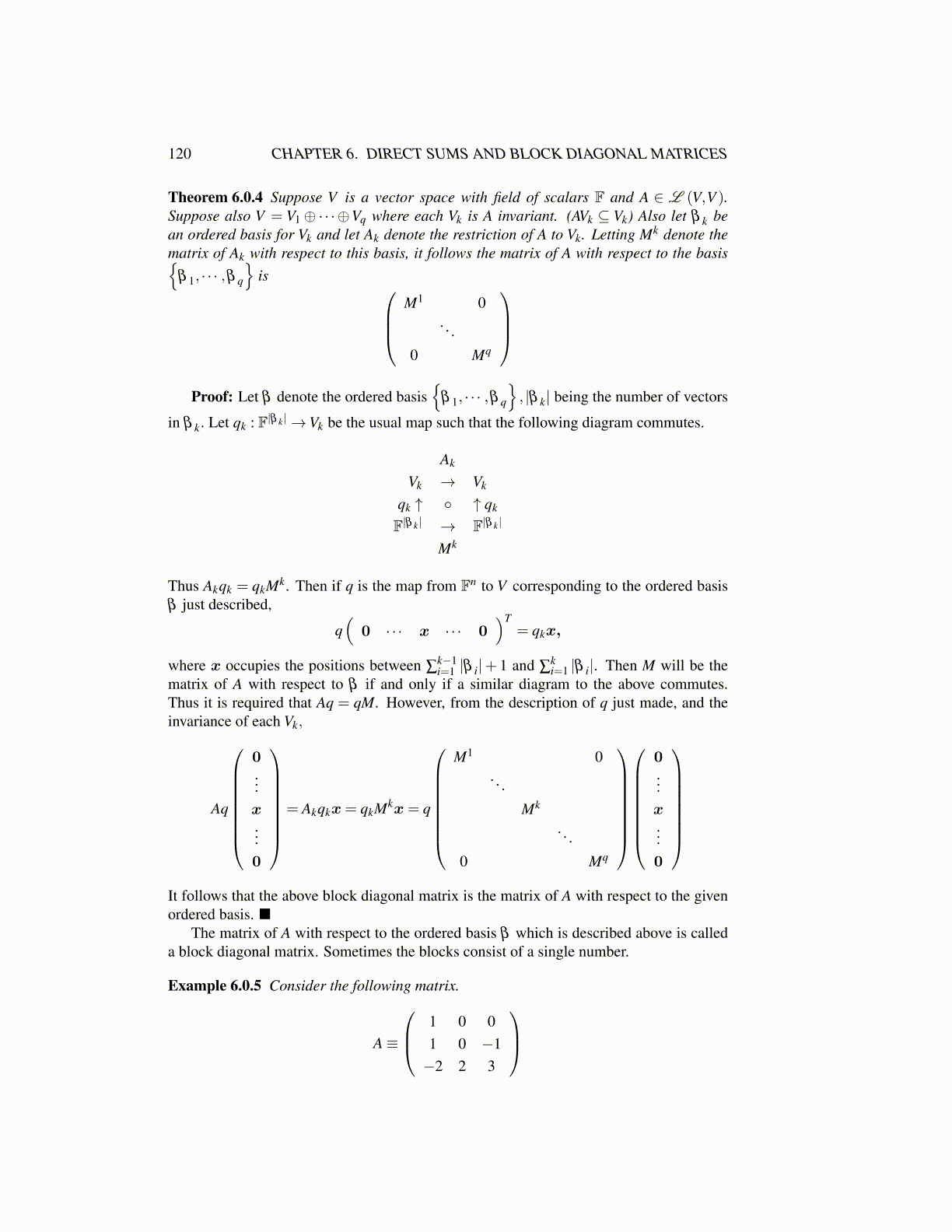
120 CHAPTER 6. DIRECT SUMS AND BLOCK DIAGONAL MATRICES
Theorem 6.0.4 Suppose V is a vector space with field of scalars F and A ∈ L (V,V ).Suppose also V = V1⊕ ·· · ⊕Vq where each Vk is A invariant. (AVk ⊆ Vk) Also let β k bean ordered basis for Vk and let Ak denote the restriction of A to Vk. Letting Mk denote thematrix of Ak with respect to this basis, it follows the matrix of A with respect to the basis{
β 1, · · · ,β q
}is
M1 0. . .
0 Mq
Proof: Let β denote the ordered basis
{β 1, · · · ,β q
}, |β k| being the number of vectors
in β k. Let qk : F|β k|→Vk be the usual map such that the following diagram commutes.
Ak
Vk → Vk
qk ↑ ◦ ↑ qk
F|β k| → F|β k|
Mk
Thus Akqk = qkMk. Then if q is the map from Fn to V corresponding to the ordered basisβ just described,
q(
0 · · · x · · · 0)T
= qkx,
where x occupies the positions between ∑k−1i=1 |β i|+ 1 and ∑
ki=1 |β i|. Then M will be the
matrix of A with respect to β if and only if a similar diagram to the above commutes.Thus it is required that Aq = qM. However, from the description of q just made, and theinvariance of each Vk,
Aq
0...x...0
= Akqkx= qkMkx= q
M1 0. . .
Mk
. . .
0 Mq
0...x...0
It follows that the above block diagonal matrix is the matrix of A with respect to the givenordered basis. ■
The matrix of A with respect to the ordered basis β which is described above is calleda block diagonal matrix. Sometimes the blocks consist of a single number.
Example 6.0.5 Consider the following matrix.
A≡
1 0 01 0 −1−2 2 3